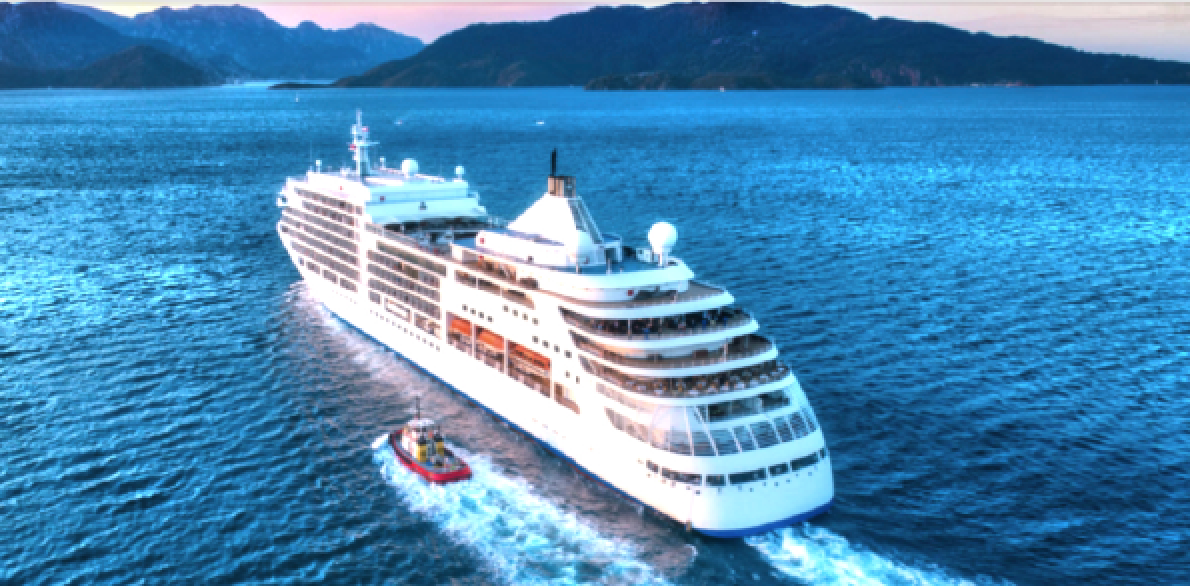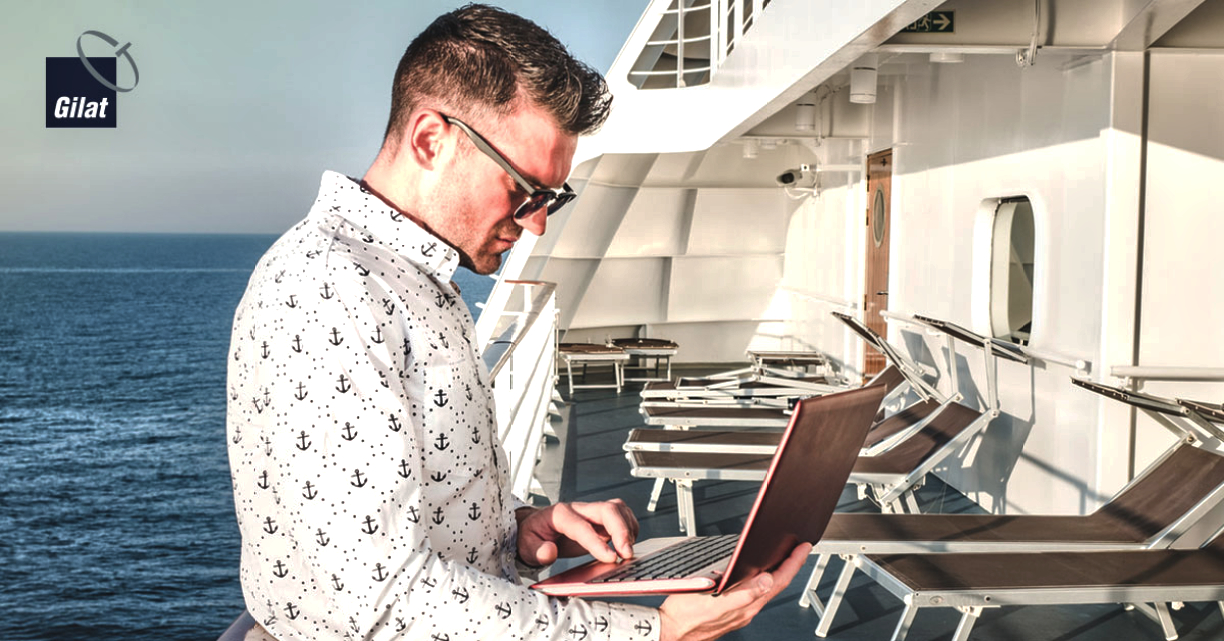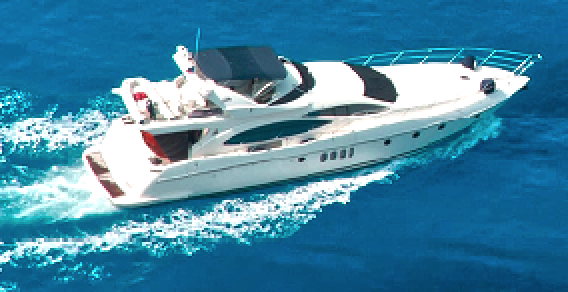Satellite communications (SATCOMs) are cost-effective and the only feasible way to ensure reliable broadband connectivity while on the move anywhere on the planet. However, COTM presents a unique challenge; how to maintain top quality connectivity while moving on land, at sea or in the air, fulfilling the requirements of very high bandwidth, top voice quality and low latency.

The Challenges Of Connectivity At Sea
For proper communication, maritime vessels need to point their antennas at the correct satellites at all times while on the move. It’s also necessary to switch between satellite beams while on the move for both GEO satellites and, more frequently, for MEO and LEO. Today, tracking satellite beams are being used for some of the big cruise ships to provide continuous focused satellite coverage.
Coverage limitation in certain geographic extremes, such as the Arctic and Antarctic, are a challenge as these are farther away from most existing GEO satellite coverage. This results in lower service throughput, service interruptions and higher cost per bit. Global non-GEO constellations are aiming to close this gap.
Floating Cities
As newer cruise ships are being built to support much larger numbers of passengers — ships have higher numbers of crew and staff and that result in cruise ship communication needs growing exponentially. For example, Royal Caribbean’s new “Wonder of the Seas” cruise ship will have 2,300 crew members and accommodate as many as 6,988 guests.
Passengers come onboard expecting to enjoy the same communication capabilities that they have at home, including uploads of videos and photos taken during the cruise to social media, downloading movies for entertainment and on-line gaming, and all that requires low latency connections. Value-added connectivity services are becoming a bigger selling point for the cruise market than ever before.
In addition, the crew and captain require more bandwidth for applications, such as navigation, weather monitoring, system monitoring, POS and inventory management, telemedicine, crew welfare and more. Altogether, cruise ships are demanding thousands of Mbps for the many passengers connected to their personal communications devices and for crew members trying to do their jobs efficiently, effectively and safely.
The Cruise Industry Relies On SATCOM

Within the maritime industry, cruise ships demand the most bandwidth and high resiliency of their SATCOM platforms. In order to meet these demands, satellite connectivity is being delivered via a combination of GEO, MEO and, in the near future, also via LEO orbits.
Passengers certainly benefit from satellite communications over MEO and LEO, as the low latency capabilities of these constellations will no doubt enhance the communication experience, while at sea, enabling the use of demanding applications such as gaming. With the ability to place LTE and 5G cells on board each ship, passengers will also be able to use their own handsets while at sea.
Gilat has partnered with SES to deliver the next-generation satellite communications for the O3b mPOWER constellation that operates in MEO, 8,000 km away from the Earth’s surface. The constellation consists of 11 high- throughput satellites with a software-defined payload that will deliver terabits of capacity at low-latency. The system provides an unprecedented increase in flexibility and throughput and is capable of continuously delivering multiple gigabits per second to a single ship anywhere on earth during seasonal peaks and in areas of high density.
Advanced technical features, which include a “follow-the-ship” capability, allow for maximum efficiency in delivering the highest throughput available today wherever a ship is traveling. The system provides the ideal combination of global coverage and low-latency, high-throughput performance for the cruise market and ensures seamless, immersive Wi-Fi and connectivity experiences. The high-performance connectivity delivered by O3b mPOWER will help the cruise industry to:
• Leverage a highly-resilient global network to deliver an always-on fiber-like connectivity experience
• Deliver seamless and secured access to cloud-based platforms and applications for shipboard productivity, passenger communications and entertainment
• Dynamically optimize the required bandwidth and increased connectivity to any ship wherever and whenever it may be
• Deliver fastest internet speeds at sea, resulting in truly immersive guest experiences
• Achieve cruise liners’ operational efficiencies by enabling real-time condition monitoring and other connected Operational Technology (OT)
Looking ahead, advanced SATCOM solutions will continue to elevate guest connectivity to provide an ultimate digital immersive experience, enabling more wearable technologies and unlocking more personalized services. This reflects a major trend across the cruise industry and the priorities of leading cruise companies as they resume sailing after the global pandemic.
Gilat’s Next Generation Platform For The Cruise Industry
Gilat’s next-generation platform is optimized to provide the required multi-orbit, multi-band service to address the high throughput needs of cruise ships.
Gilat’s Aquarius is an ultra-high-performance family of VSATs created for operation over next-generation, Very High Throughput Satellites (VHTS) GEO and Non-GEO (NGSO) constellations. The Aquarius family of VSATs supports flexible satellites servicing multiple mobility applications including commercial maritime and cruise ships, as well as broadband, 4G and 5G backhauling, corporate enterprise services and heavy connectivity trunking links.
The Aquarius VSAT family was designed to provide uninterrupted service, supporting next-generation, software-defined satellites. Aquarius enables seamless operation, “make before break” NGSO satellites handover, switching between GEO and NGSO or switching between different GEO satellites. To provide continuity of service for those use cases, Aquarius is equipped with dual transmit/receive interfaces and fast adaptive reconfiguration capabilities on both the forward and return channels supporting satellites on-the-fly changes.

The Aquarius Pro VSAT exhibits ultra-high processing capacity, achieving throughputs over gigabits per second.
The high communication demands of cruise ships can be addressed by aggregating several Aquarius Pro VSATs to work in parallel to deliver multiple gigabits of capacity per ship.
Smooth Sailing Ahead
To conclude, Gilat delivers superior ground infrastructure and solutions across the mobility sector, including both aviation and maritime. The company’s mobility solutions have been developed to meet the demands of our customers: bandwidth management, high performance and optimal efficiency.

Striving to improve the communication experience of both crew and passengers, our platforms are designed to improve ship to shore connectivity, make life easier for crew members, enhance the travel experience aboard passenger ships, and power current and future onboard operational applications.
www.gilat.com/solution/maritime/
Author Ofer Tsur is the Strategic Account Management for Gilat Satellite Networks.



